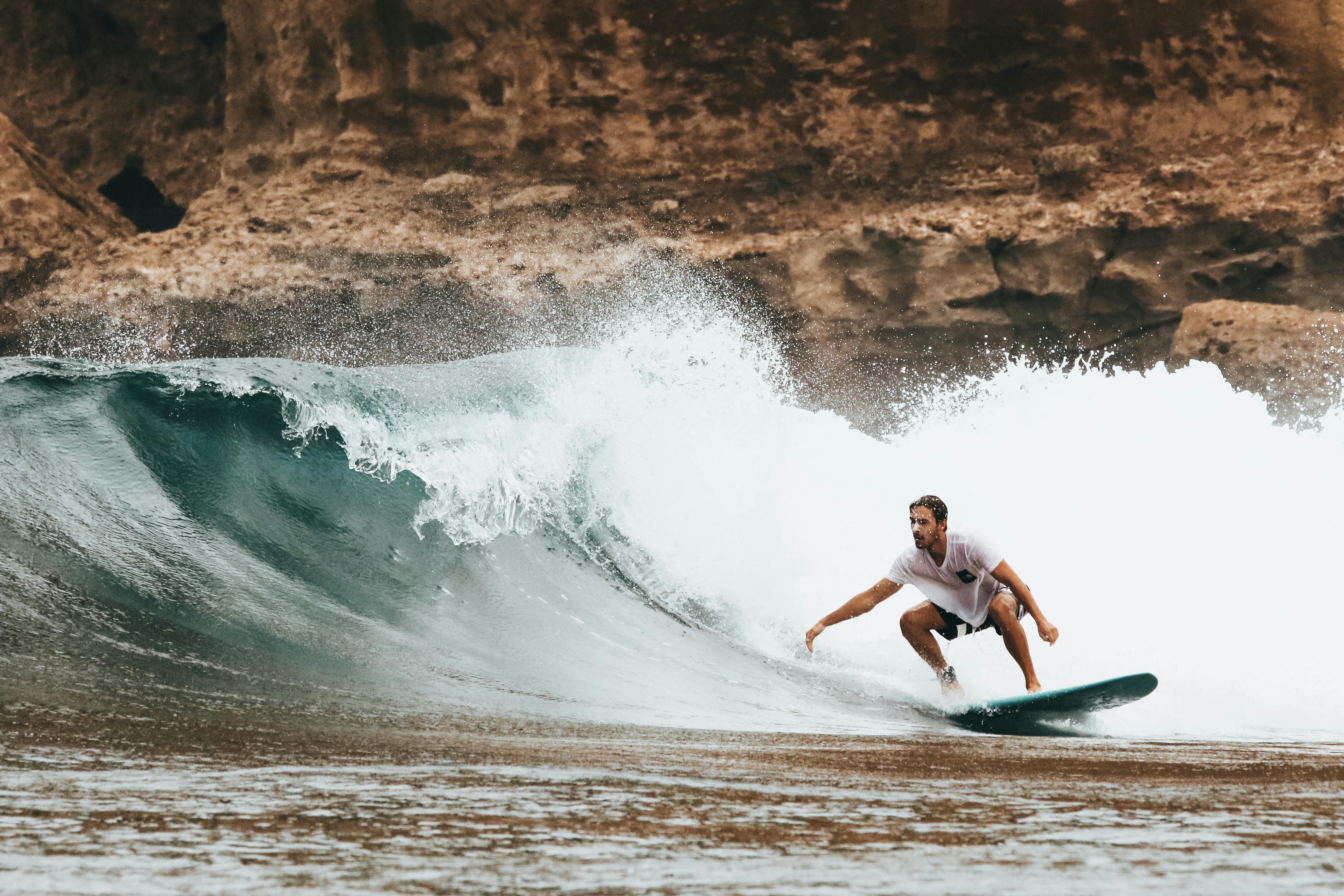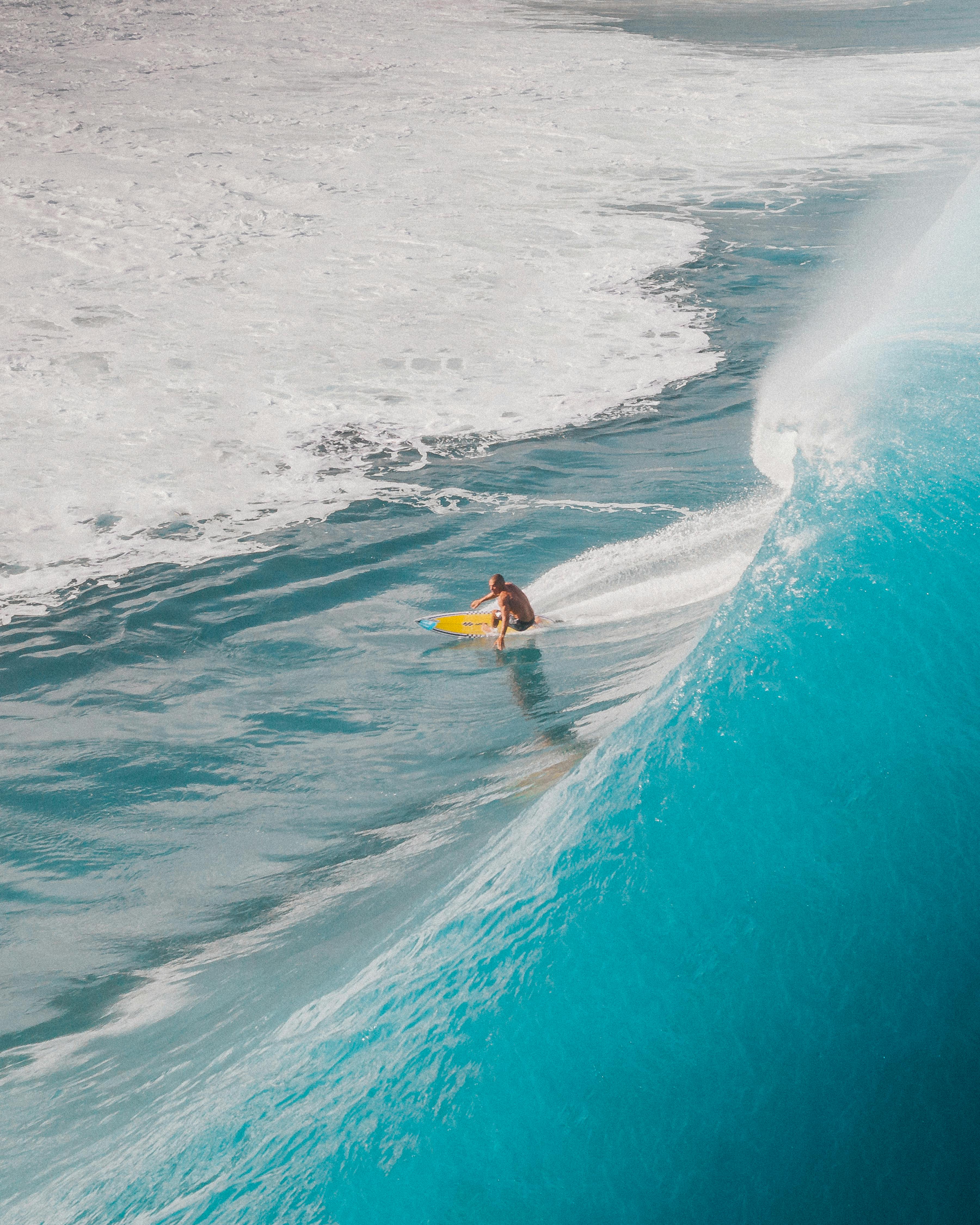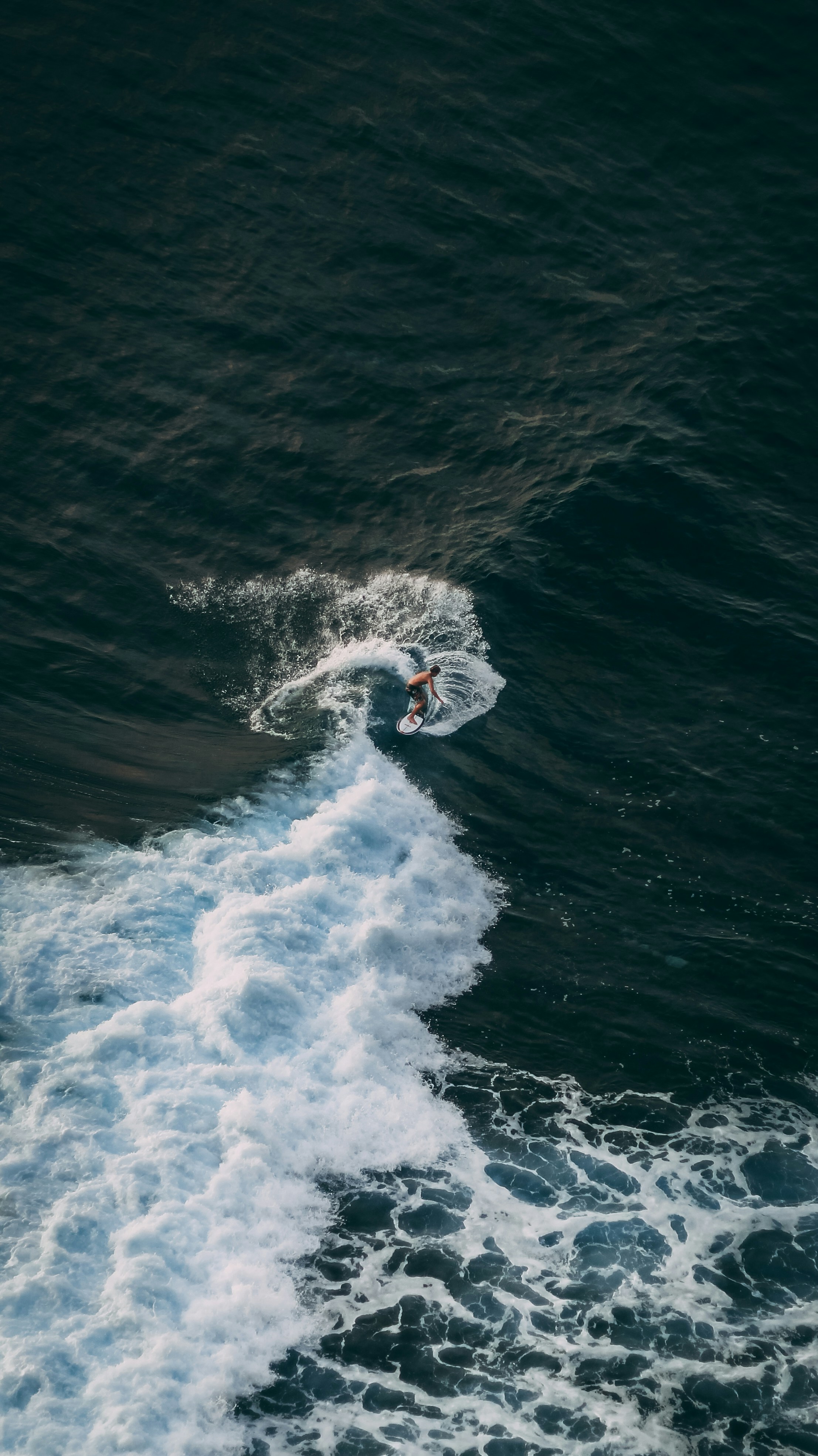Bottom Turns – The Setup That Defines Your Surfing
The bottom turn isn’t just another maneuver – it’s the foundation of every good ride. It sets up your speed, your line, and every move that follows. Nail it, and surfing feels fluid and powerful. Miss it, and you’ll be stuck in the flats, dragging water, and struggling to link turns.
Here’s how to make your bottom turn count.
1. Use the Lift of the Wave
Many surfers turn too early on the face and miss the real power. The bottom of the wave is where energy is drawn upward – it’s like coiling a spring. Drop lower, engage your rail, and let that lift drive you back up the face. Think of it less as “forcing” a turn and more as loading and releasing energy.
2. Don’t Rush the Turn
A rushed bottom turn feels twitchy and kills speed. Instead, lean in and let the arc build naturally. Your board should feel like it’s carving, not snapping. A good cue: exhale and extend as you rise – if it feels smooth and unhurried, you’re doing it right.
3. Stay on Rail, Not Flat
Flat turns feel safe, but they create drag and stall your momentum. Rolling onto rail reduces resistance, grips the wave face, and keeps your speed alive. When you get it right, the board feels like it’s slicing through water, not skimming awkwardly across it.
4. Energy Split: 30/70
The bottom turn is just the setup – it’s not where you spend all your power. Put about 30% of your energy into the bottom turn, and save the remaining 70% for the top turn. Think of it as winding up a whip: the more controlled your bottom turn, the harder your top turn will crack.
5. Timing Is Everything
Too early, and you’ll end up stranded in the flats. Too late, and you’ll be fighting against the wave’s steepest section. The sweet spot is when the wave just begins to bend upward. A simple drill: watch the foam line and begin your lean just before reaching it – that’s when the wave’s energy is primed to push you through.
TRAX: Helping You Read and Refine Bottom Turns
Bottom turns are about rhythm, timing, and precision – and that’s exactly what TRAX measures. With detailed feedback on turn angles, weight shifts, and speed, you’ll see whether you’re really tapping into the wave’s lift or forcing your board flat. TRAX closes the gap between what you feel and what’s actually happening – so your bottom turn becomes the perfect setup for everything else.
Related Reading:
→ How to duck dive — Get under waves without losing ground
→ Surf stance: finding your balance — The foundation of all good turns
→ Surfing bad conditions – why it’s worth it — Learn from messy days instead of avoiding them








